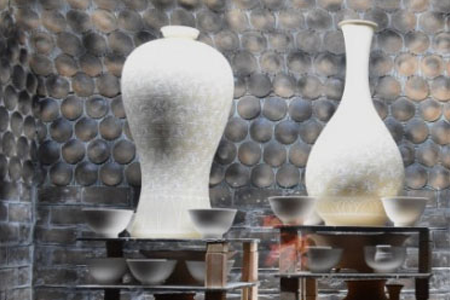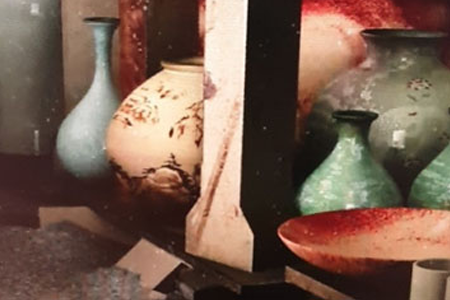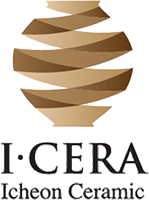Icheon Pottery History
Icheon Pottery History
A long history and tradition of Korean ceramics
In the Korean Peninsula, making and using earthenware began about 10,000 years ago. Over the next few thousand years, people developed high-temperature firing techniques and perfected harder earthenware during the Three Kingdoms period. By the 9th and 10th centuries, Korea became the second country in the world to produce celadon and white porcelain after China, blossoming into a high-quality ceramic culture.
Goryeo's superior craftsmanship and culture led to the creation of jade-green celadon, inlaid celadon, and copper-red celadon in the 12th century, elevating its porcelain and celadon to world-class status. The standard of Goryeo celadon was so high that the Chinese admired it, saying, "The colorless celadon of Goryeo is the best in the world," according to records from China, the dominant porcelain producer at the time.
The success of Goryeo celadon then led to Joseon white porcelain through the Buncheong ware. Since the 14th century, the world's attention shifted to the purity and hardness of white porcelain, considered as the best in Asia. The Joseon royal family established the Saongwon branch Royal Kiln around 1467 to produce fine white porcelain for royal and government use.
Since then, white porcelain was not only widely popular throughout Joseon, but also reached Japan during the Japanese invasions of Korea (1592-1598), changing the landscape of ceramics in East Asia and the world. During the 17th century, the porcelain industry briefly declined, but, in the 18th century, during the reign of Kings Yeongjo and Jeongjo (1724-1800), Korean white porcelain enjoyed a revival with the creation of large, imposing pieces with delicate celadon patterns. Korea's ceramics, which were not very open to the West, are more valuable today because their own traditions and culture with little outside influence were preserved.

Pottery history in Icheon, the center of Korean ceramic culture
In the Bronze Age, about 4,000 years ago, large-scale dolmens were built in Icheon, and undecorated pottery was actively produced. Ceramics continued to be produced in Icheon afterward. Records from the early 16th century show that "white jade" and "pottery" were famous as Icheon's specialties.
To this day, the remains of kilns that produced ceramics during the Joseon Dynasty can still be found throughout Icheon. After the privatization of the Royal Kiln in 1884 and the loss of its identity during the Japanese occupation, traditional ceramics gradually regained stability after the Korean Liberation (1945) and the Korean War (1950-1952).
Near the capital city of Seoul, Icheon, Gyeonggi-do, was abundant with raw materials and firewood, using traditional kilns and traditional methods of making ceramics. It began to flourish with local potters and potters from all over the country. Since 1987, the annual Icheon Pottery Festival and its designation as a UNESCO Creative City in 2010 have contributed significantly to the internationalization of Icheon pottery, the development of the pottery industry, and the expansion of pottery culture.
Today, Icheon has established itself as the center of Korean ceramics.

Korean ceramics with a long history and tradition
Icheon, Korea's representative ceramic city, is a "ceramic village" that has been naturally formed by potters from all over the country since the modern times based on a long tradition of ceramics.
Currently, there are about 420 workshops throughout Icheon that produce a wide range of products and works, including celadon, white porcelain, Buncheong ware, clay pots, and figural ceramics. Icheon's potters operate small workshops and value traditional handmade methods, such as using potter's wheels and firing in wood-fired kilns.
This is due to the passion, pride, and artistic spirit of the potters who are willing to study and practice the techniques and processes of traditional ceramics with the fundamental question of 'how to inherit the excellent tradition of Korean ceramics'.
At the center of this trend are the Korean ceramic masters, whose families have been involved in traditional Korean ceramics for generations, and are responsible for the present and future of Korean ceramics, as well as the Icheon ceramic masters, who are selected and recognized by Icheon City. Moreover, many emerging artists are exploring new forms and techniques, leading the way in inheriting and developing the tradition, and creating a new Korean ceramic tradition that meets today's craft trends.
Main signature (horizontal/vertical combination)
-
horizontal

-
vertical

